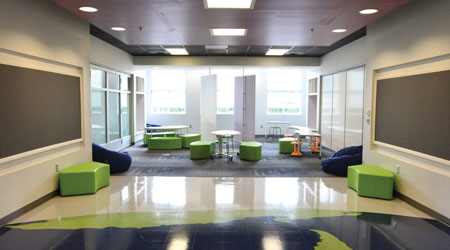
How the implementation of a green cleaning program enhances the business relationships for K-12 and university facilities
I have worked for more than 25 years in education administration in Athens-Clarke County, Georgia. During that time, I’ve been rewarded by experiencing the impact that caring and conscientious professionals can make in the design, implementation and assessment of an educational facility’s role as a function of the learning process.
Numerous research studies from academic and medical organizations have explored the tremendous health, psychological and social benefits that educational facilities have for students and staff. There is also ongoing research exploring how to better assess academic success as a result of green cleaning initiatives and improved facility management.
Although national studies aren’t yet available, I’d like to share some examples of how implementing green cleaning has enhanced the learning environments within our schools, as well as our relationships with the cleaning business community.
Clarke County School District launched a green cleaning program in 2011, featuring it in two administrative buildings and one school. Since that time, all 24 schools and administrative facilities have been converted. Today, the district cleans more than 2.5 million square feet, serves 14,800 students, employs 120 custodians and has an annual cleaning budget of $260,000.
Although the district has had a successful green cleaning program in place for almost eight years, it was not the first educational facility to push for sustainability.
The University of Georgia piloted a green cleaning project in Old College (built in 1806) in August 2005. This was done in commemoration of the 100-year renovation completion. The program sought to improve indoor air quality (IAQ) in buildings; substitute hazardous chemicals with safer, environmentally friendly cleaning products; reduce employee workplace accidents; and standardize employee work practices. Within three years, the campus-wide green cleaning program was implemented in 168 buildings.
Over 500 hazardous cleaning chemicals were removed from use, and replaced with two daily cleaners with environmentally friendly compounds for use by the 275-person in-house custodial staff. The entire custodial staff was also required to attend a two-week “Building Service Worker Academy,” which provided training from both in-house and business partners on sustainable cleaning techniques, equipment and customer service.
Steps To Implementing Green Cleaning Programs

 The Down and Dirty on Cleaning in Virus Season
The Down and Dirty on Cleaning in Virus Season How Surfactant Use is Expanding in Commercial Cleaning
How Surfactant Use is Expanding in Commercial Cleaning Maximize Your Margins: Learn How to Automate Pricing and Track Rebates
Maximize Your Margins: Learn How to Automate Pricing and Track Rebates